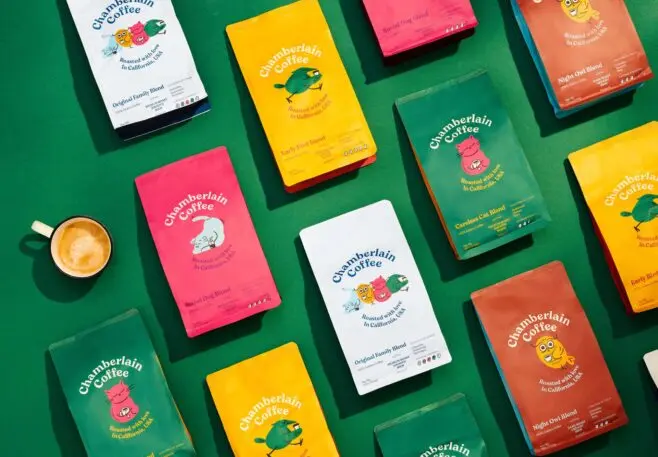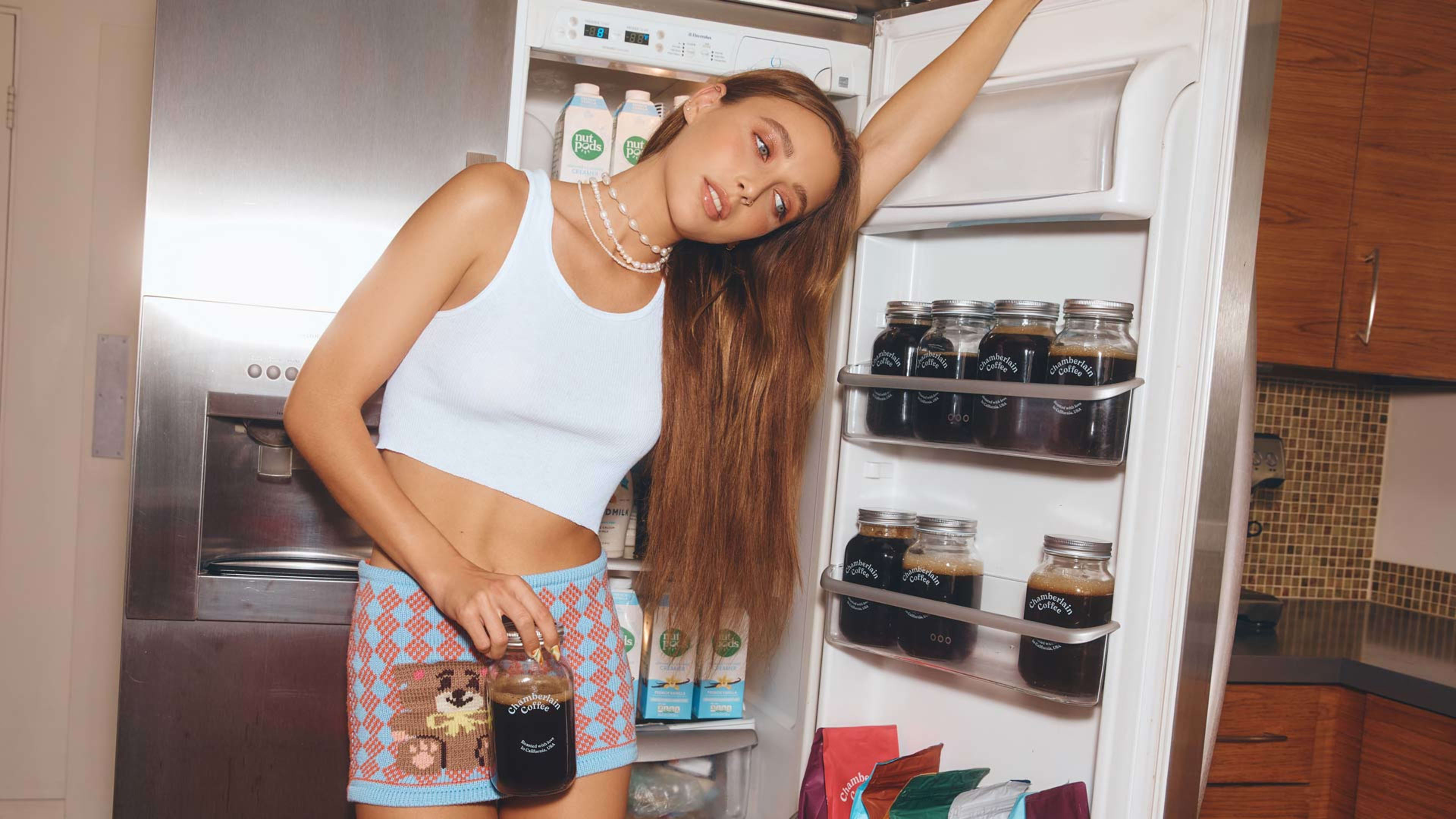Listen to the latest episode of Fast Company’s Creative Control podcast on Apple Podcasts, Spotify, RadioPublic, Google Podcasts, or Stitcher.
Emma Chamberlain has been called “the most important YouTuber today” and social media’s “it girl,” and it’s not hard to understand why.
Since starting her eponymous channel in 2017, Chamberlain has amassed 11.3 million YouTube subscribers, in large part because of her wry comedic tone and signature editing style, which forgoes anything remotely glossy or sleek for a lo-fi feel. Not being overproduced in both the look and content of her vlogs made Chamberlain more relatable to an audience that increasingly has favored content creators removing the literal, and proverbial, filters from their lives.
Part of Chamberlain’s being so candid has been recently admitting to her audience—and herself—that she needed a break from the platform that made her a star. “I think there’s a strategy out there with YouTube that makes it tolerable and makes it emotionally possible. I haven’t necessarily fleshed out what that would be yet,” Chamberlain says in the latest episode of Fast Company‘s podcast Creative Control. “But I think it would actually entail going against all of the stereotypical YouTube rules.”
The main “rule” that many creators have spoken out about has been the feeling that if they take a break from uploading regularly, their channel will suffer. In a 2019 open letter, YouTube CEO Susan Wojcicki acknowledged that claim, stating that she had the product team look into it:
They went over data from the last six years and found good news. Across millions of channels and hundreds of different time frames for breaks, the same thing was true: On average, channels had more views when they returned than they had right before they left. If you need to take some time off, your fans will understand. After all, they tune into your channel because of you.
Chamberlain notes that as she reflected on her burnout, the issue wasn’t YouTube itself but too much of it.
“I needed to step back and rethink what my strategy and formula needs to be,” she says. “And also how I can make it fun for myself again and not feel like this forced grind where I’m following the rules of an imaginary YouTube rule book.”
While Chamberlain is adjusting her relationship with YouTube, she’s shifted her focus toward her coffee company Chamberlain Coffee.
To know Chamberlain’s presence online is to know that her obsession with coffee runs deep. She has made any number of coffee-related videos, and she’s also toured cafés in Paris for Vogue France and taste-tested both cheap and expensive coffees for Cosmopolitan. However, instead of doing an endorsement deal with a brand, she launched her own in 2019. That initial soft launch led to a major rebrand in 2020, and Chamberlain has since been zeroing in on where her company fits within a market that’s expected to hit $144 billion by 2025.
“I’m not creating a new product here,” Chamberlain says. “The thing that I really wanted to do was take all of the best parts of all of my favorite coffee companies and put them into one.”
Check out highlights of Chamberlain’s conversation, below, and listen to the full episode of Creative Control on Apple Podcasts, Spotify, RadioPublic, Google Podcasts, or Stitcher.
Percolating unpretentiousness
Chamberlain grew up in San Bruno, California (which is also home to YouTube’s headquarters), and frequented coffee shops in San Francisco with her dad when she was younger. It was during that time she got absorbed into the coffee culture and “the nitty gritty details of what good coffee is.”
“And then when I started YouTube, I naturally was vlogging my everyday life. So people saw me drinking coffee 4 million times a day and then started associating me with coffee,” Chamberlain says. “I’ve always wanted to be a barista or open a coffee shop, and my path led me in a very unique direction where I had the resources to actually create the company itself from the ground up.”
Her approach to Chamberlain Coffee has been to strip away any of the pretentiousness around coffee culture to make it accessible in taste (opting for less acidic, smoother blends) and in brand messaging. “I wanted to be the coffee brand that was like, Hey, if you know about coffee, we got you. And if you don’t know anything about coffee, we’ll teach you,” Chamberlain says. “Instead of feeling like this coffee’s somehow too good for me. That’s how I used to feel about a lot of coffee. The branding, the verbiage on everything, makes me feel like I don’t even deserve to be buying this because it’s too sophisticated for me.”
“We wanted to be the complete opposite,” she continues, “and also just have fun with packaging and not just be a boring bag, making it playful and charming and something that you want to have on your countertop instead of in your cupboard.”

Chamberlain is highly aware there’s a target on her back as an influencer launching a business. People either dismiss these ventures as hollow cash grabs to exploit massive followings or there’s a sentiment that influencers have an unfair head start because of their massive followings.
“I don’t hate having that fire under my ass,” Chamberlain says. “It motivates me to make my company as high quality and as impressive as possible. I want to prove to people that this is not just something that I slap my name onto and stepped away from, and now other people are handling it. I’m involved in this on a daily basis—on even an hourly basis sometimes—because I want this to succeed.”
To that point, Chamberlain admits Chamberlain Coffee, at the moment, is more of a passion project than a “money opportunity.”
“Starting a new business, especially from scratch, involves reinvesting in the business constantly. So I’m not making wild paychecks from this,” she says. “I’m reinvesting everything back into the business, because that is what I want to do. I want to build this to be an amazing coffee company, and I don’t care about profiting from it right now.”
“I would be lying if I said that I hope I never make a dime from this,” she continues. “It would be amazing to have this be something that could help support me. But I’m in no rush to get there.”
Chamberlain is also in no rush to return to YouTube.
A new ‘Tube
Chamberlain’s last upload to YouTube was back in December. Between Chamberlain Coffee and her podcast Anything Goes, she’s had plenty to keep her occupied. She still has a desire to do YouTube; she just hasn’t figured out a more sustainable approach to her videos that oftentimes can take up to 30 hours of editing per video.
She’s also reconsidering the idea of being a day-in-the-life style vlogger, the very format that she’s become synonymous with. “It’s really hard to show all the details of your life all the time. It feels shockingly vulnerable and out of control at times,” Chamberlain says. “The vlogging style isn’t necessarily aging well because you can only show so much about your life before you run out of stuff to show, and then you need to start showing more and more personal stuff.”
“But for most people, when they start showing more and more personal stuff, they start to feel violated on [by] their own hand. They’re doing it themselves,” she continues. “But then if you don’t keep showing more vulnerable stuff, then people get bored.”
Knowing she isn’t the only YouTube creator who’s been experiencing burnout or reevaluating their relationship with these platforms, Chamberlain sees a larger shift in content on the horizon. Sit-down, more formal videos gave way to on-the-go vlogging which, as Chamberlain mentioned, isn’t aging well.
“What’s next is yet to be developed. But I think that we’re right there,” she says.
By her estimation, the prevailing format will either be content that’s extremely low-touch in shooting and editing, or creators will start uploading their videos as seasons to sidestep the expectation that they’ll be posting as frequently.
Content aside, Chamberlain’s hope for creators going forward is the normalization of taking time off.
“A lot of creators start to feel like they don’t exist in real life anymore, and they only exist online,” she says. “I’ve felt like that many times throughout my experience constantly producing content for the internet.”
“I used to feel so angry at myself because I was like, ‘Emma, you have the easiest job on the planet. Just do it,'” she continues. “But the truth is that it might be easy in some ways, but emotionally it’s very, very draining and very difficult. And so I think that I wanna see creators taking more breaks end of story—and not being as hard on themselves when they do.”
Recognize your brand’s excellence by applying to this year’s Brands That Matter Awards before the early-rate deadline, May 3.
